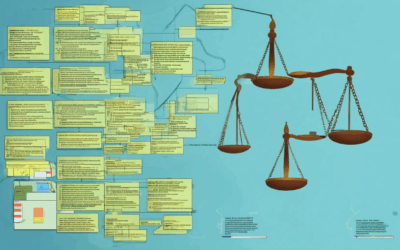Staff development in Nonprofits (NPOs) plays a pivotal role in fostering organizational growth and achieving mission objectives. As Nonprofits navigate a complex landscape, the ability to cultivate and retain skilled professionals becomes paramount. This article delves into strategies and approaches designed to maximize the impact and efficiency of professional development initiatives within NPOs. By exploring topics ranging from workshop planning to leadership training, we aim to provide actionable insights for enhancing staff capabilities. Whether you’re looking to build a robust development team or refine existing practices, this exploration of strategies and resources will offer valuable guidance for NPOs aiming to thrive in competitive environments.

How Many Development Staff Should a Nonprofit Have?
The ideal number of development staff for a nonprofit depends on several factors, including the organization’s size, fundraising goals, and program complexity.
Key Factors Influencing the Ratio
- Organization Size: Larger nonprofits typically require more development staff due to increased fundraising targets and complex programs.
- Funding Goals: Nonprofits aiming to raise significant funds may need a higher ratio of development staff to donors and contributors.
- Program Complexity: Organizations managing multiple initiatives or partnerships often require additional development personnel.
Traditional Development Staff Ratios
- 1 Development Staff : 1 Million Dollars Raised: This is a commonly cited ratio, though it varies based on the nonprofit’s specific needs and capacity.
- Smaller Nonprofits (Less Than $2M Raised): May operate effectively with 1 development staff member for every 2-3 million dollars raised.
- Larger Nonprofits ($10M+ Raised): Often require 1 development staff member for every 500,000 to 1 million dollars raised, depending on program complexity.
Development Staff-to-Program Scope
- Simplified Operations: Nonprofits with straightforward missions and fewer programs may manage effectively with fewer development staff.
- Complex Campaigns: Organizations running multiple campaigns or managing grants may require a higher ratio of development staff to program scope.
A Practical Formula
To estimate the number of development staff needed, consider the following approach:
- Determine your annual fundraising goal.
- Assess the complexity of your programs and the number of relationships you aim to cultivate.
- Apply a ratio that aligns with your organizational capacity and goals.
By carefully evaluating these factors and applying the appropriate ratio, nonprofits can determine the optimal number of development staff to support their mission and achieve their objectives.
What Does a Development Team Do at a Non-Profit?
A development team at a non-profit plays a pivotal role in securing resources to support the organization’s mission. Their responsibilities extend beyond fundraising to include strategic planning, relationship building, and operational support. Here’s a breakdown of their key functions:
- Fundraising Strategies :
- Develop and implement comprehensive fundraising plans, including grant writing, individual donor campaigns, corporate sponsorships, and special events.
- Research and identify potential funders, tailoring proposals to align with their interests and goals.
- Donor Engagement :
- Build and nurture relationships with current and prospective donors, ensuring ongoing engagement through personalized communication and stewardship activities.
- Organize events and volunteer opportunities to foster a sense of connection and community among donors.
- Strategic Collaboration :
- Work closely with programmatic teams to align fundraising initiatives with the organization’s goals, ensuring resources support core missions effectively.
- Collaborate with external partners, including foundations, corporations, and individual donors, to explore funding opportunities and partnerships.
- Organizational Strategy :
- Conduct market research to identify emerging trends and competitive landscapes, informing strategic decisions to maximize fundraising outcomes.
- Assess and evaluate the feasibility of funding opportunities, ensuring alignment with the organization’s vision and capacity.
- Compliance and Reporting :
- Ensure adherence to legal and regulatory requirements, maintaining accurate and transparent financial records.
- Prepare and submit timely reports to funders, demonstrating accountability and the impact of their contributions.
- Capacity-Building :
- Strengthen the organization’s infrastructure by enhancing donor relations, volunteer coordination, and program effectiveness.
- Provide training and resources to staff and volunteers, enabling them to contribute more effectively to fundraising efforts.
- Measurement and Impact :
- Establish key performance indicators (KPIs) to track fundraising success, such as dollar amounts raised, donor retention rates, and program outcomes.
- Regularly assess and report on the effectiveness of development strategies, refining approaches based on performance data.
By integrating these functions, the development team ensures the non-profit has the resources needed to achieve its mission, fostering long-term sustainability and impactful programming.

What is Staff Development in an Organization?
Staff development in an organization refers to the strategic process of enhancing the capabilities, skills, and productivity of employees through targeted initiatives and programs. This approach focuses on fostering personal and professional growth, ensuring that employees are aligned with organizational goals, and contributing effectively to overall success.
Effective staff development programs often include:
- Leadership training to prepare employees for advanced roles
- Mentorship and coaching to support career advancement
- Skill development workshops to improve technical and soft skills
- Performance reviews to identify strengths and areas for improvement
- Opportunities for certifications, degrees, or specialized training
The benefits of staff development extend beyond individual growth. Organizations that invest in their workforce often see increased productivity, better employee retention, and improved job satisfaction. This leads to a more motivated and engaged team, which is crucial for achieving long-term objectives.
Moreover, staff development aligns closely with organizational goals by ensuring that employees have the competencies needed to adapt to changing demands and drive innovation. By prioritizing employee growth, organizations create a culture where talent thrives, fostering a competitive edge in the market.
Leveraging resources like those offered by NPO Expert can provide valuable insights and strategies to implement effective staff development programs tailored to your organization’s needs.

How to Structure a Nonprofit Development Team
A well-structured nonprofit development team is crucial for securing funds, building relationships, and achieving mission goals. Below is a detailed breakdown of how to effectively organize your team:
1. Senior Leadership Roles
- Development Director : Oversees the entire development strategy, including fundraising, grant writing, and donor relations.
- Fundraising Manager : Manages specific fundraising campaigns, events, and individual giving programs.
- Grant Writer/Grants Manager :专责撰写申请书并管理资助项目,确保符合各个基金会的要求。
2. Core Development Team Roles
- Major Gifts Officer : Focuses on cultivating and soliciting major donors and gifts.
- Annual Giving Coordinator : Manages the annual giving program, including membership drives and recurring donations.
- Event Planner/Coordinator : Organizes fundraising events, galas, and auctions to engage donors and raise funds.
- Stewardship Coordinator : Ensures consistent communication and acknowledgment of donors’ contributions, fostering long-term relationships.
3. Support Staff
- Administrative Assistant : Provides support to the development team, including scheduling, reporting, and database management.
- Marketing Coordinator : Creates promotional materials and manages digital presence to attract potential donors and volunteers.
- Research Analyst : Conducts donor research and analyzes data to inform fundraising strategies.
4. Volunteer and Intern Roles
- Volunteer Fundraisers : Engage volunteers in fundraising activities such as phone-a-thons, community outreach, and event support.
- Interns : Provide assistance in administrative tasks, research, and event planning, offering fresh perspectives and energy.
5. Organizational Chart Structure
Below is a simplified hierarchical representation of the nonprofit development team:
- Development Director
- Major Gifts Officer
- Annual Giving Coordinator
- Event Planner/Coordinator
- Grant Writer/Grants Manager
- Fundraising Manager
- Stewardship Coordinator
- Marketing Coordinator
- Administrative Assistant
- Research Analyst
- Volunteer Coordination Team
- Volunteer Fundraisers
- Volunteer Event Planners
This structure ensures clear communication, defined roles, and efficient operations, enabling the nonprofit to maximize its fundraising capabilities and community impact.
For further reading on nonprofit development strategies, explore resources from trusted platforms like GuideStar and Charity Navigator . These platforms offer valuable insights and tools for optimizing your nonprofit’s development efforts.
What is a Development Department in a Non-Profit?
The development department in a non-profit organization plays a pivotal role in securing the financial resources necessary to sustain and grow the organization’s operations. This specialized team is responsible for identifying and mobilizing a diverse range of funding sources to ensure the continued success of the non-profit’s missions and programs.
Key Functions of the Development Department
- Fundraising and Donor Acquisition: The primary responsibility is to acquire funds through various channels, including individual donations, corporate sponsorships, foundation grants, and major gifts. The department employs strategies such as direct mail, online donations, and personal solicitations to engage potential donors.
- Grant Writing and Funding Research: Development teams often pursue grants from governmental agencies and private foundations. They conduct thorough research to identify suitable funding opportunities and prepare compelling grant proposals that align with the organization’s objectives.
- Major Gifts and Planned Giving: Cultivating relationships with high-net-worth individuals and families to secure significant contributions. This may involve estate planning discussions and creating endowment funds to ensure long-term support for the organization.
- Event Planning and Community Engagement: Organizing fundraising events such as galas, auctions, and benefit dinners. These events not only raise funds but also foster connections between donors and the organization’s leadership.
- Strategic Partnerships: Building alliances with corporations, educational institutions, and other non-profits to leverage shared interests and resources. These partnerships can lead to joint initiatives and collaborative funding opportunities.
Strategies and Best Practices
- Diversified Funding Sources: The development department understands the importance of diversifying revenue streams to reduce reliance on any single source of funding. This includes exploring alternative income generation strategies such as membership fees, program fees, and earned income models.
- Donor-Centric Approach: Focusing on building lasting relationships with donors by understanding their motivations and preferences. Tailoring outreach strategies to appeal to different segments, such as younger donors who prefer digital engagement versus traditional methods.
- Regular Reporting and Communication: Maintaining consistent communication with donors to keep them informed about the impact of their contributions. Providing updates on how funds are utilized and sharing success stories to reinforce donor loyalty.
- Compliance and Ethics: Adhering to legal and ethical standards, including regulations related to donations, tax deductions, and privacy protection. Ensuring transparency in financial reporting and operational practices to build trust with stakeholders.
Collaboration Across Departments
The development department works closely with other teams within the organization, such as program directors and marketing teams, to ensure alignment in messaging and strategy. Effective collaboration ensures that fundraising efforts support broader organizational goals and maintain a cohesive brand presence.
Measuring Success
- Fundraising Metrics: Tracking key performance indicators such as total revenue raised, cost per acquisition, and donor retention rates. These metrics help evaluate the effectiveness of fundraising strategies and inform future decision-making.
- Impact Assessment: Demonstrating the tangible impact of development efforts on the organization’s programs and mission. Highlighting success stories and measurable outcomes to showcase the value of contributed funds.
- Evaluation and Adaptation: Regularly assessing and adjusting strategies based on performance data and changing market conditions. Staying adaptable to evolving donor needs and competitive fundraising landscapes.
By leveraging a combination of innovative strategies, strong relationship-building, and strategic planning, the development department plays a critical role in sustaining and expanding the reach of non-profit organizations. Their efforts directly contribute to the realization of the organization’s vision and mission, ensuring continued impact and growth.
For more resources on non-profit development and fundraising strategies, visit our main website .

How Are Development Teams Structured?
A well-structured software development team typically comprises diverse roles working collaboratively to deliver high-quality products. Here’s a breakdown of common roles and their responsibilities:
- Business Analyst : responsible for understanding stakeholder needs and translating them into functional requirements.
- Product Owner : oversees the product backlog, prioritizes features, and works closely with the development team.
- Project Manager : manages timelines, budgets, and delivery processes to ensure projects stay on track.
- UI/UX Designer : focuses on creating intuitive user interfaces that provide a seamless user experience.
- Software Architect : designs the overall system architecture and ensures technical feasibility.
- Software Developer : implements the software solution, coding according to specifications.
- Quality Assurance Engineer : tests software to identify bugs and ensure it meets quality standards.
- Test Automation Engineer : develops automated testing scripts to streamline the testing process.
- DevOps Engineer : handles deployment, monitoring, and maintenance of applications in production environments.
For further reading on optimizing your development team structure, check out TechCanvass and AgileCraft , which offer valuable insights and tools for improving team performance.
Conclusion
Understanding the structure of a development team is crucial for effective project management and collaboration. By having clear roles and responsibilities, organizations can maximize productivity and deliver high-quality outcomes.





0 Comments